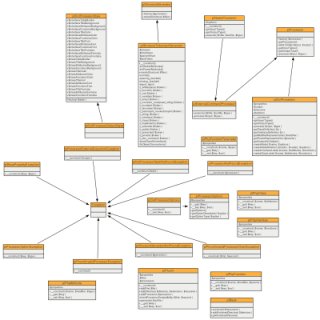Note
WARNING: This project isn't actively maintained anymore, mainly due to the lack of time. I migrated it to github by request. Hopefully somebody might find this useful as a base to work on again. Eventhough it should still be compatible with current PHP versions. It does not support newer features like namespace and such. Of course Pull-Requests are always welcome. If somebody wants to take over maintership completely I would be happy to discuss that.
phUML is fully automatic UML class diagramm generator written PHP. It is capable of parsing any PHP5 object oriented source code and create an appropriate image representation of the oo structure based on the UML specification.

The image shown here is the class diagramm which phUML created when run on its own codebase. This image is hardly readable, because it has been resized to fit in the layout of this page. You can take a look at the complete image by clicking here
phUML should be compatible with any object oriented code written in PHP5. At the moment it unfortunatly does not support any PHP4 code.
phUML has quite a informative help interface, which can be accessed by calling it with the -h option.
$ phuml -h
The phUML generator works with so called processors, which may be used in a chain to create a lot of different output formats. Every available processor can be listed by calling phUML with the -l option.
$ phuml -l
The most important processor used to create images of any kind is the graphviz processor. As its name indicates it outputs information in the so called dot language used by graphviz. To sucessfully handle this output format and create the desired images you will need the graphviz toolkit installed on your system. You may then call the neato or dot executables, which are part of graphviz, to process the created file manually or you may phUML do this for you by using the dot or neato processor.
You should just play around with the phUML commandline tool to get a better understanding of what the processors do and how they work. To give you a short example of how a complete phUML call could look like, this is the one used generate the example you can see above.
$ phuml -r ./ -dot -createAssociations false -neato example.png